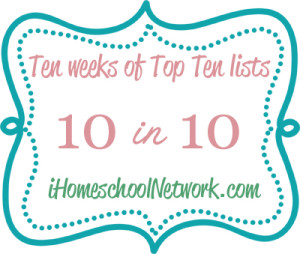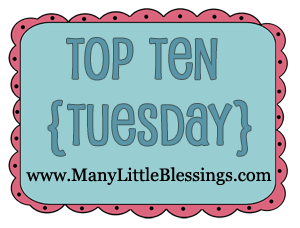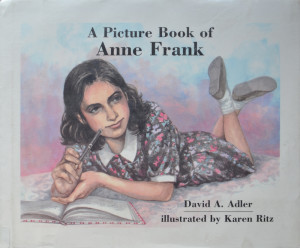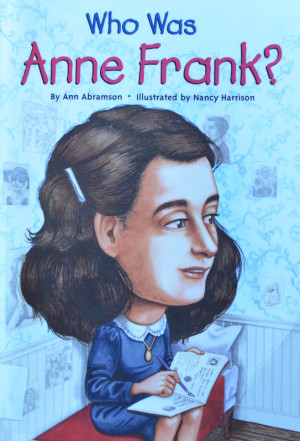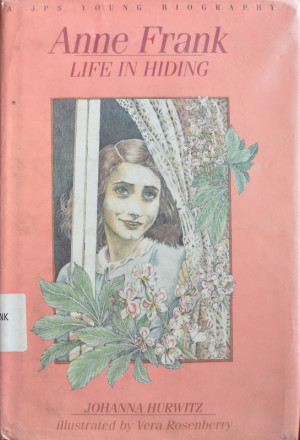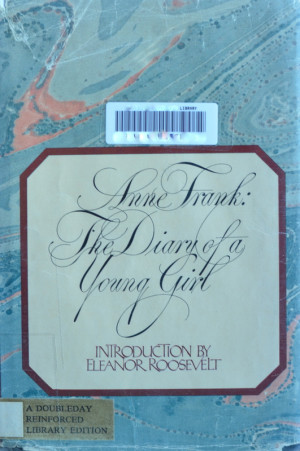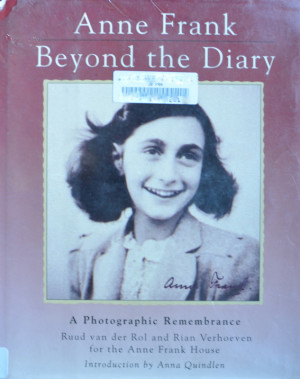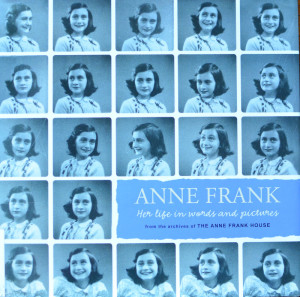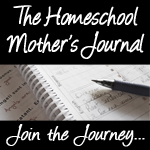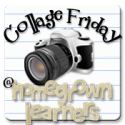 Hi, I'm Heidi and I homeschool my two sweet kids. I want them to know that learning is an exciting lifelong adventure! We love great books, unit studies, notebooking, lapbooking, and hands-on learning.
Hi, I'm Heidi and I homeschool my two sweet kids. I want them to know that learning is an exciting lifelong adventure! We love great books, unit studies, notebooking, lapbooking, and hands-on learning.How I Teach History Using an Eclectic Lifestyle of Learning
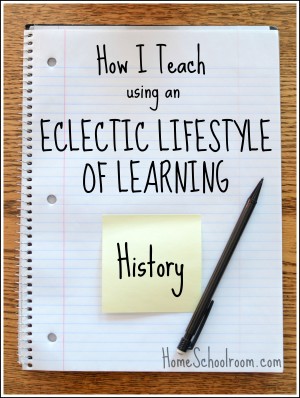
Remember when I said that before I started homeschooling I was excited to share my love of science with my children? Well…I didn’t have the same enthusiasm for history. It was never my favorite subject in school–it seemed just lists of dates and names that I could not remember.
The History of Our Homeschool History Studies
Our first attempt at history was studying the Revolutionary War using a free Homeschool Share unit. We read wonderful stories of the people and events, watched dramatizations of the action, and made period food and crafts. No one had ever told me history was so interesting!
We continued immersing ourselves in historical time periods over the next two years. It was still fascinating, but I found the need to simplify this year. I was planning too much, creating an overwhelming workload for myself and listing more work than we could ever complete. It was taking away the joy of our learning, and kept us from moving on and learning new information because I was waiting to complete all the things I had planned!
So this year, it’s a less-is-more approach. I’ve made great strides in taming my tendency to plan too much. It’s not to say we’re less interested or even that we’re learning less, but I’m planning less, we’re focused more on reading and narrating, with hands-on activities directed by my children with less work from me.
Not only is this more relaxing and joyful for me, but we’re moving through the periods at a reasonable speed, staying in tune with prime interest and learning and allowing them to see the connections between time periods!
Homeschooling History Take Two: Relaxed, Eclectic
I’m using Story of the World as our spine along with the corresponding activity guide. So far we haven’t used many of the activity suggestions, but I use the book lists for extra reading and usually one of the maps for each civilization. Using a spine text has simplified my planning. The other must-have resource for me is All Through The Ages, a guide full of recommended living books to use in studying history.
Here’s our simple plan for history studies:
- FOCUS ON READING:
- We read a chapter in Story of the World for a basic understanding of events.
- We read living literature to give us a deeper understanding. And read…and read some more!
- We watch videos for fun and educational value. This can be anything from the hilarious Horrible Histories to documentaries on Netflix.
- NARRATE:
- My children narrate what they have gleaned from our reading. (More details on our narration in just a minute.)
- If time and ideas permit WE MAKE AND DO. (I’ll talk more about how and what…just keep reading!)
A Note on Narrating
Narrating is simply retelling what the child has learned in their own words. It’s a simple yet powerful Charlotte Mason technique. The difference this year is how often I’m having my children narrate and how I’ve simplified the implementation. We’re narrating nearly all of our history reading, so it is happening at least a couple times a week. Recording them is simple: my daughter writes or types her own (we edit together when she’s done) and my son draws a picture then gives me an oral narration while I act as his scribe. No searching for themed notebook pages or fussy to cut minibooks. Just plain printer or notebook paper, filled with ideas bursting from their minds!
Our Hands-On History Learning
Our simplified plan doesn’t mean no hands-on learning opportunities. I’m just more careful about which ones and how much it requires of me. I’m not combing the internet and trying to orchestrate every hands-on learning opportunity I see. I keep a tight reign on what activities I plan, keeping in mind what can be learned or reinforced by it, and how much time and effort it requires, both from me and my children.
What has worked well so far is a two pronged approach that facilitates hands-on learning without bringing back my overworked feelings:
- For each civilization one of the books I choose is one with activities: games, crafts, recipes, etc. For instance, we used the book Ancient Egyptians and Their Neighbors when studying Ancient Egypt. I can choose hands-on ideas, or my daughter (who loves making things) can choose independent projects.
- I allow my children’s ideas, and what intrigues them from the information, be my guide. For example, it is common for my children to role-play our history studies. One day they decided, on their own, to act out one of the Greek myths. Now I’m happy to help them make simple Greek costumes from a white sheet (from the book Spend the Day in Ancient Greece). I am confident a little effort on my part will enhance their reenacting, and this will in turn help them remember the stories even better.
That’s the how-to of our history studies. There’s one more installment in the “How I Teach” series. Join me next time when I put on the finishing touches: fine arts!
The “How I Teach” Series:
An Aerial View of History With Brimwood Press
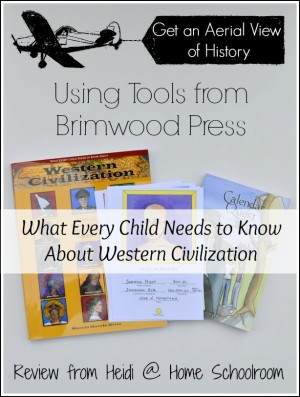
I’ve always had a terrible sense of direction. In fact, I can get lost coming out of a store at the mall. However, I find if I look at a map first to get the aerial view I understand the layout better and can remember where I’ve been and where I’m going.
This summer my children and I got the aerial view of history! We had focused on American history in the last two years and planned to begin Ancient history this fall. With perfect timing Brimwood Press offered me the chance to review What Every Child Needs to Know About Western Civilization.
Disclosure: I was given the curriculum materials from Brimwood Press free for review. This post details my honest opinion after using these materials with my children. I was happy to become an affiliate for Brimwood Press because I feel they produce a quality product for homeschoolers.
A Unique Approach to Studying History
This isn’t your ordinary history curriculum. Most programs are designed to take you through history and give a detailed look at time periods, civilizations, and the famous people of the past. Brimwood has created a product that is designed to do just the opposite: give you a quick overview (they call it a “jet plane ride”) of 5,000 years of history in about a month.
It isn’t just different because of how quickly it moves through history, it also takes the unique perspective of following the developments in our western calendar through the time periods. According to Brimwood Press:
By learning the story of the calendar, children develop a mental scope and sequence of 5,000 years of Western history to which all subsequent learning can be related.”
Why is a quick overview of history important?
I’m a big fan of getting lost in a time period. In fact, we immersed ourselves in pioneer times for a whole school year and loved it! But just like looking at one small section of map makes it hard to understand how to get from one area to another, spending long periods of time on one major period makes it hard to connect how contributions from one time period affect the future and the relationships between civilizations.
I wouldn’t want to spend all our history studies learning at this jet plane speed, but for getting an overview the speed is the key. Understanding the ways history has shaped our own culture actually makes our in-depth history studies feel more relevant.
What Every Child Needs to Know About Western Civilization Prepares Students for Timelines
I’m ready for my children to start compiling a historical timeline of their own (or, for Charlotte Mason homeschoolers, a “Book of Centuries”). This program was a great way to help my kids understand how we’ll be setting up our timeline notebook.
What timelines can do for children is to provide a framework into which they can put pieces of knowledge as they learn them. For this framework purpose, timelines should be very simple–so simple that children can memorize them.” Ruth Beechick in You Can Teach Your Child Successfully
The key historical periods memorized using the Hats of History cards is just that–a simple framework for my children to assist in future learning. Now as we go back and learn about the Sumerians and Egyptians, the Dark Ages and the Renaissance, they understand the overall road map and can see where we’ve been and where we’re going.
What Do You Need For What Every Child Needs to Know About Western Civilization?
Required Materials:
- What Every Child Needs to Know About Western Civilization is the teacher’s guide and student activity book in one. It contains all the historical information and activities, along with perforated cardstock pages for the Hats of History Cards and stickers for the back of the Hats cards.
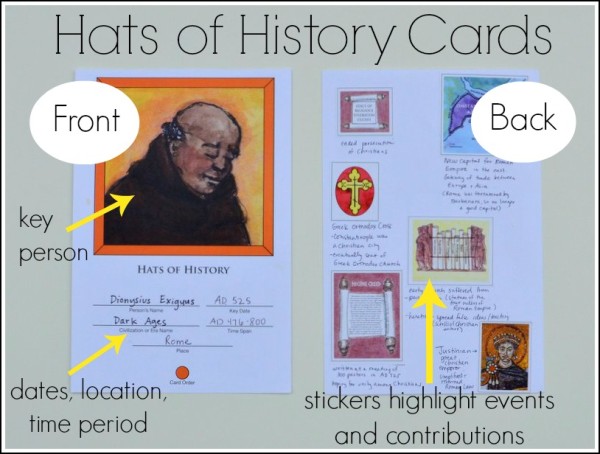
- Calendar Quest is a historical fiction book in which two children reluctantly end up time traveling with Father Time. He’s rather grumpy that people don’t understand the amazing calendar so he takes Lindsie and Evan on a trip through time to see how it developed.
Optional Items:
- Color the Western World is a beautiful large size coloring book with one page for each time period. This would be nice to keep a child’s hands busy while you read and be a good review tool as well. My children don’t enjoy coloring pages, so I merely put this out for them to look at while we worked through the lesson.
What Did I Like Best About Brimwood Press’ WECN?
- The Hats of History Cards were my favorite part of the program. As you go through the lesson you add stickers for major events, people, or contributions from that time period. I wrote small notes beside the stickers so we can use these cards for review. I love the resource they become: 14 cards covering major time periods with a color photo of a key figure, the dates and location, and important details. Before each lesson we made a game by covering the dates so my kids had to put the cards in order from memory.
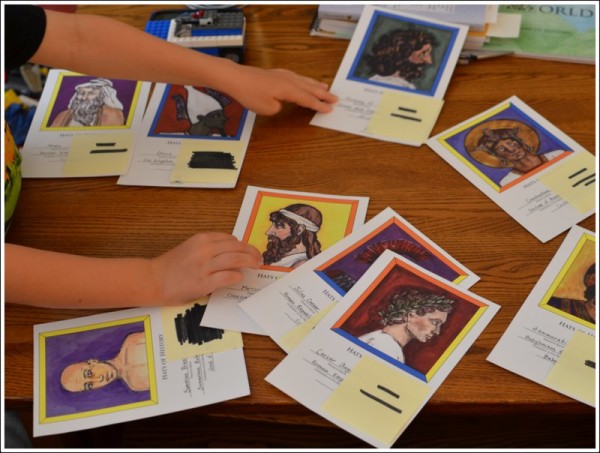
- The program is flexible. It’s meant to be covered in about a month, but you can move a little more slowly. For our relaxed summer schedule it took about two months. (Note: this is not designed to be used at the same time as other history studies. It would defeat the fast-paced design.)
- It works for a range of ages. Though the intended age group is grades 5-8 it’s easy to bring younger children along. My son enjoyed the Calendar Quest story and the hands-on component of the Hats of History cards and stickers.
- It’s a keeper. This entire product is worth keeping on my shelf. The guide is a great reference book for major events and contributions of historical periods. Calendar Quest is a book my children could enjoy in their free reading time. And I foresee going through this program again when my son is in the intended age range. My daughter would then be in high school and I believe would benefit from this quick overview to strengthen her understanding of the flow of history.
Was There Anything I Didn’t Like About WECN?
- I was going to complain that the maps for each lesson are not full page and in order to use them you must photocopy them from the guide which made it difficult to get a good copy of maps near the binding edge of the page. But nevermind, because now Brimwood Press offers the maps in a free download on their website! (Just scroll down the page for the pdf link.)
- This complaint is more of a personal preference, and is something my kids actually enjoyed: many of the historical characters in Calendar Quest are presented as a bit…silly. Cleopatra is more focused on her cat than what’s happening, Charlegmane is obsessed with making fur accessories from Lindsie’s guinea pig, and Pope Gregory just wants his lunch. While it makes for an entertaining read I did reiterate to my kids that I thought many of these people were probably quite serious about the topics at hand. That being said, I still found the book to be filled with historical information and my children were very engaged in the story.
Are You Interested in Learning More?
If you think your history study could use an aerial view, head over to the Brimwood Press website and check it out for yourself. There you can learn more about their products, view sample pages, and get ready for your jet plane ride through history!
10 Foods to Help You Feel Like a Pioneer

I am a homeschooler and I love to eat, so it should come as no surprise that I like to prepare foods that go along with our studies! I shared about the foods we ate during our study of the 50 States, and today I’m sharing foods we enjoyed during our study of the pioneers of the 1800s.
We actually had a few opportunities to focus on food from this time period: my daughter had a Little House themed birthday party, I shared about pioneer life for her Girl Scout troop, and we invited friends over for a chuck-wagon style dinner as an end of unit celebration.
Snacks and Sides:
1. Homemade Bread: I shared this recipe for simple whole wheat bread during my Tea Time post last week. It really is an easy to make homemade bread even for the novice bread-baker. It’s a great way to show the kids how much different it is to make bread from scratch rather than pick up a loaf at the store.
2. Homemade Butter: I’ve made butter with three groups of kids and it’s not only fun but gives them great insight into the work required for every little thing you ate before the days of supermarkets.
- Put some heavy cream into a glass jar with a tight-fitting lid. I use a canning jar and fill it about half full.
- Then shake, shake, shake! After a while you’ll see whipped cream in your jar.
- Keep shaking until you see yellow lumps.
- Keep shaking until you have a big yellow lump (butter) and some white liquid (buttermilk–save it to make pancakes with the next day!)
3. Canning: This isn’t a recipe for a certain food, but an activity I highly recommend you try with your kids. Make a batch of jam (strawberry, blackberry–anything!) or pickles. We’ve canned a few times and I’m always amazed at the amount of work. We work together on it, it takes half a day and makes a big mess, and we talk about how they had to preserve enough food to last them through the winter. If you’re a total novice, the Ball Complete Book of Home Preserving is a great guide that covers all the basics and has lots of recipes.
4. Cornbread: I’m partial to this recipe for honey cornbread from Allrecipes.com, but would love to try this authentic-looking recipe for Little House style cornbread that adds bacon grease and cooks in a cast iron skillet.
5. Apple Butter: This is a nice treat on a slice of homemade bread. We made ours in the oven using a recipe from American Kids in History: Pioneer Days (a great book, by the way, with lots of ideas for things to make, do, and eat). Allrecipes.com has a recipe for apple butter that cooks in the crockpot.
Main Course
A full pioneer style dinner calls for a simple and filling main course.
6. Beef Stew: Again, if we’re using bullion we’re cheating a bit, but this recipe for a fairly simple beef stew is a satisfying main course.
7. Baked Beans: This simple recipe for baked beans has ingredients pioneers might have had on hand. We use a recipe from my husband’s Aunt Alice. Hopefully I don’t get in trouble for giving out a secret family recipe!
- 2 pounds soldier beans
- 1/2 pound salt pork
- 1 medium onion
- 2 tsp dry mustard
- 3/4 cup brown sugar
- 1 1/2 cup maple syrup
- 1/2 cup molasses
Soak the beans overnight. In the morning boil them for 5-7 minutes. Add everything to a bean pot, add water just to cover and bake for 8 hours at 275 degrees. We don’t have a bean pot so we use a crock pot on low for 8-10 hours.
A Sweet Ending
8. Apple Pandowdy: I tried this recipe for Pandowdy. It’s sort of like a cobbler though messier looking, but in a bubbly and delicious sort of way.
9. Sugar on Snow: We had actually tried sugar on snow during our Maple Syrup unit study.
10. Pie, with a homemade crust: Does any one else love the convenience of the easy unroll-and-bake refrigerated pie crusts? For the pioneer experience make a pie crust from scratch and have the kids help you with the whole messy job. Fill it with apples or pumpkins (if you’re really adventurous you could skip canned pumpkin and prepare the pumpkin yourself) or for a main course try chicken pot pie. This pie crust recipe I learned at a pie-making class. (And forgive me for the shortening. I do try to avoid it!)
- 4 cups flour
- 1/2 cup sugar
- 1 teaspoon salt
- 1 3/4 cup shortening
- 1 egg
- 1 1/2 teaspoon lemon juice
- 1/2 cup water
Mix flour, sugar, salt and shortening by hand until it crumbles. Add wet ingredients just until mixed. Roll out and proceed with your yummy pie recipe. Makes four crusts.
Don’t forget to enlist your kids’ help preparing these foods from scratch–they’ll understand a little more about life for children during that time period. In truth we aren’t even getting the full experience since we didn’t have to grow and thresh the wheat to make our flour, or slaughter the animals, and Ma Ingalls certainly didn’t have nicely ground dried spices from the store or canned chicken stock. It may not be fully authentic but it helps us understand how much work was involved in making all their food–and that children had to help!
Hop over to iHomeschool network to see what other homeschool bloggers are cooking up.
This blog hop series was inspired by Angie of Many Little Blessings where you’re welcome to link up, too!
Learning about the Life of Anne Frank
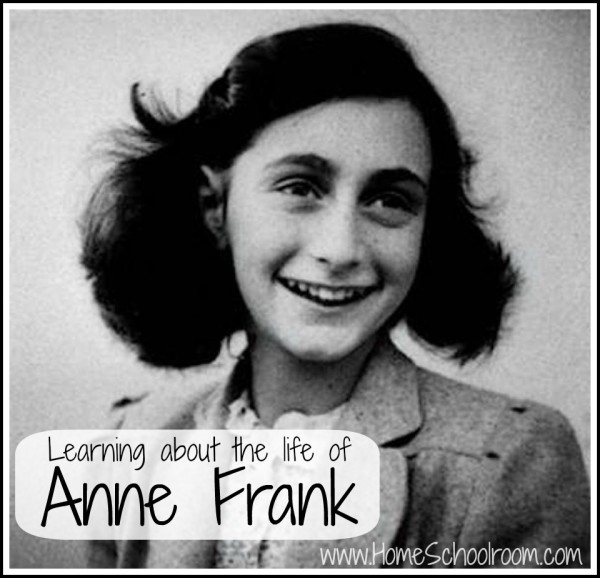
Anne Frank is the face of the Holocaust for many people who have read her diary. She was born on June 12th, 1929, so in participation with the June famous birthdays blog hop for iHomeschool Network I put together some ideas for introducing Anne Frank to your children.
Anne’s story puts a personal touch on the atrocities of the Holocaust. Instead of just reading numbers that are almost too large to imagine, and hearing that even children died, your children are meeting one of those children.
A child who had the same hopes and dreams they do.
A child who lived in fear and hiding for two years.
A child whose story does not have a happy ending.
The sad ending may be the most difficult part to handle, but I think it is also what gives my children the truest connection to a story that should never be forgotten. Fortunately there are wonderful books about Anne Frank’s life written for a wide range of ages.
The book titles are Amazon affiliate links, but I always give my honest opinion of products.
A Picture Book of Anne Frank by David A. Adler
This warmly illustrated picture book is a good introduction to Anne Frank’s story for elementary children. The story also provides an overview of Hitler and the persecution of the Jews under his regime. There is no sugar-coating of the atrocities, and there is a haunting painting of Anne and her sister frail near the end of their lives, but I believe the lack of real photographs keeps it easier to handle for young children.
Who Was Anne Frank? by Ann Abramson
This is a chapter book biography about Anne Frank written in 2007. I did not enjoy the writing style of short choppy sentences or the pencil sketch illustrations, but I did appreciate much of the content. This book provides a lot of information about the war and events happening throughout the region, and has more details than the other books I reviewed about restrictions placed on Jews. The information on what happened after the Frank family was discovered hiding is less detailed and more cursory.
Anne Frank, Life in Hiding by Johanna Hurwitz
This chapter book biography written in 1988 has details about the actions of the Nazis and persecution of the Jews–personalized by telling what Anne went through during these events, from wearing a yellow star to going into hiding in the place she named The Secret Annex. The illustrations are very detailed pencil drawings. This book shares many more details on the difficulties Anne faced as an adolescent in hiding and her personal struggles. It tells the story of Anne’s life after the Gestapo discovered the people in the Secret Annex and her family was sent to various concentration camps and about the publishing of her diary.
Anne Frank: The Diary of a Young Girl
This is the book through which the world came to know Anne so well. It is a lengthy book of her diary entries beginning on her thirteenth birthday, just before her family went into hiding, and ending just before their arrest by the Gestapo. In her own voice you read the emotional difficulties that were on one hand typical of a girl becoming a young woman but on the other hand amplified by the incredible stress Anne was under and the pressures of life in hiding. It is Anne’s actual diary entries, so your personal relationship with Anne is even deeper. There are details about her often difficult relationships with the other occupants of the Secret Annex, including Peter, the young man she grew to love. I would say it is best suited for middle schoolers and up–children in the age range Anne was when she wrote her diary. The afterword shares the story of what happened to Anne after her arrest and how her diary came to be published. Anne Frank: The Diary of a Young Girl, edited by Otto H. Frank and Mirjam Pressler, is the newer version that contains entries that had been cut from the previous editions.
These next two books were both done in cooperation with the Anne Frank house and are filled with many of the same photographs of Anne’s life before hiding, the Secret Annex and the others who hid there, the people that helped them hide, and Anne’s diary entries.
Anne Frank: Beyond the Diary, A Photographic Remembrance by Ruud van der Rol and Rian Verhoeven
The primary text for this book reads like a story and centers around Anne’s life and diary entries, while also telling the stories of the Holocaust and war. The photographs of people wearing yellow stars, emaciated prisoners, “Jews Forbidden” signs, food rationing coupons, and even the document listing the Frank family’s transport to Auschwitz bring a haunting reality to the text. The book shares information about the concentration camps and heart-wrenching photos including children that were sent to the gas chamber and starving prisoners. The book wraps up by telling of Anne’s death, the end of the war, her father’s life after the war (he was the only survivor from the Secret Annex) and the publishing of her diary.
Anne Frank: Her life in Words and Pictures from the archives of The Anne Frank House
This newer version includes a collection of color photos of the Secret Annex when it was refurnished for a film, extra details about Anne’s life in the prison camps from witnesses there with her, and additional concentration camp photos (including dead bodies being piled). This book is a smaller size than the previous book, and is set up more like a scrapbook. There are a few pages of text now and then, but it reads less like a story and more of the information is found in large captions for the photos. Brief information about Hitler, the Holocaust, Germany and the Netherlands is included in a glossary at the back of the book instead of along with the primary story.
For our homeschool we’ll be learning about Anne as we study World War II, and I will keep the study of her life simple. My children will read the books suited to their ages, we’ll go through selected pictures from the photographic books, and they’ll each complete a notebook page. (There are two free versions at Activity Village, just scroll down alphabetically to her last name.) We will step into this amazing story as deeply as each of my children can handle it and let Anne’s story touch our hearts.
Hop over to learn about other fascinating people born in June from the bloggers of iHomeschool Network.
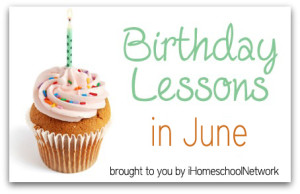
Ten Things to do when Visiting Washington, DC with Kids

Washington, DC is a fabulous place to visit, full of history and amazing architecture with educational opportunities around every corner. There is so much to see and do–and most of it is free! We recently returned from five full days exploring our capital from morning to night and could easily have spent a month…if our feet could have handled any more walking.
We did a lot of research and advance planning for this trip. We’ve been studying American history for the last two years, so much of what we would see related to something we’d learned and this enriched the visit for my children. We also read through The Kid’s Guide to Washington, DC for an overview of the main attractions to prioritize our time. You definitely can’t do it all!
This isn’t an exhaustive list of activities and places to go (there are hefty guide books for that), but I wanted to share the major activities we enjoyed on our trip with a seven and ten year old. I’m listing them in reverse order, so if you have less time in DC scroll down for the top choices that had the biggest impact on our family.
#10 The Pentagon
We scheduled a tour ahead of time. For the most part the inside of the Pentagon looks just like a regular office building (albeit a big one with escalators and stores), but the tour guide was an impressive young man who shared about the history of the building and the military in general. The best part of this tour was the memorial where the plane hit on 9-11. It’s very touching to stand in the Pentagon looking out the window at the hotel that had antennas knocked off by the low flying plane.
#9 Supreme Court
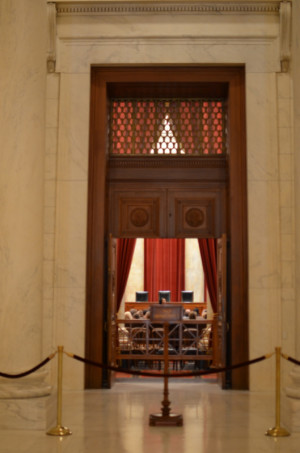
The front of the Supreme Court building looks beautiful, though we only saw a printed drape because of construction. The inside is incredible: huge, marble, and designed to impress. You can watch a video and listen to a talk by a tour guide, and if court isn’t in session you’ll visit the actual chamber.
If you’ve studied the three branches of government with your children like we did during our Government Unit Study it’s worth the time to visit the home of the Judicial Branch.
#8 The National Zoo

I’ll admit zoos give me mixed feelings: it’s fascinating to see these animals up close, but I can’t help think how contained some of them are versus their natural habitat. That being said, we enjoyed our visit to the Smithsonian National Zoological Park. There was one clear highlight, and that was a sea lion that wanted to play. My son was mesmerized and wanted to stay forever.
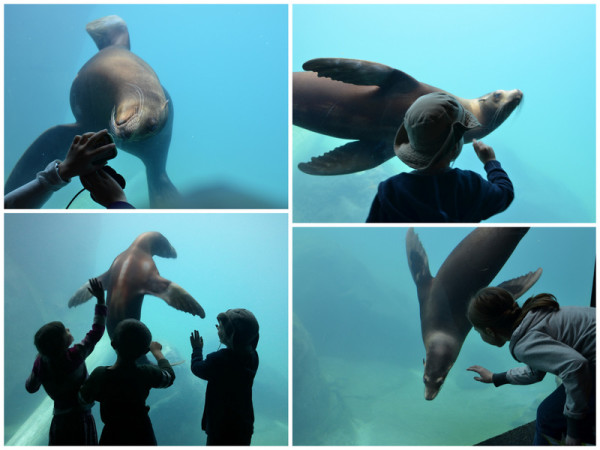
#7 Museums
Which museums should you visit, you ask? You can’t possibly see everything in every museum. All the Smithsonian museums offer free admission, so those topped our list.
Our favorite, which may be less popular than some of the larger museums, was probably the National Postal Museum for its hands-on exhibits. We loved the display about Owney, the famous postal service dog from the late 1800s. (We’d read about him in the book Owney, The Mail-Pouch Pooch. Check out the museum page for other resources and free curriculum.)
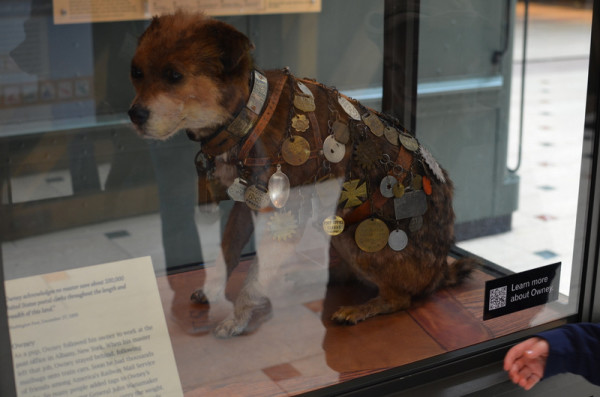
We prioritized the Museum of American History because of our history studies and the Air and Space Museum because of one little boy who wanted to see all the planes and space ships.
There are many other museums we just couldn’t fit into our schedule: the International Spy Museum, the Newseum and the Holocaust Museum (my kids were under the recommended age for this). My recommendation is to not try to rush through them all, but pick ones of particular interest to your family.
#6 National Archives
How can you pass up seeing the actual Declaration of Independence, Constitution, and Bill of Rights? The children’s book The Journey of the One and Only Declaration of Independence prepped my kids for the wonder of seeing the Declaration still in existence.
There are many other exhibits at the archives–the highlight for us was seeing Charles Ingalls’ actual handwriting on his homestead paperwork. I recommend scheduling your National Archives tour in advance to save on waiting.
#5 The White House

Unfortunately White House tours were cancelled due to budget cuts, so perhaps this would be even higher on our list if we could have gone inside. We read The Story of the White House for the background on this residence with so much history.
We could see the garden and even caught a glimpse of the President’s dog running on the lawn! The view from the front and the back is lovely, and don’t forget to check it out at night!
#4 The Monuments
We began our tour of the monuments of the National Mall at dusk, our goal being to end at the Lincoln Memorial after dark when it would be lit up. We began at the Vietnam Memorial.
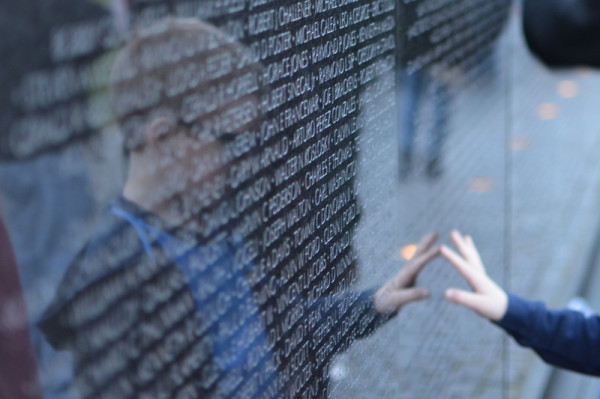
I whispered to my kids, “Look at all these names.”
I could see that they understood. The stone was warmed by the sun and we ran our hands over the etched names and the combination of the visual simplicity of the monument and the tactile nature is overwhelming.
We’ve talked about the Vietnam War, and the public opinion debates, and how some soldiers were treated when they returned. We’ve talked with Vietnam veterans that greet planes of soldiers coming and going at the airport in a city near our hometown. Standing at the memorial you SEE and FEEL the sacrifices made by so many.
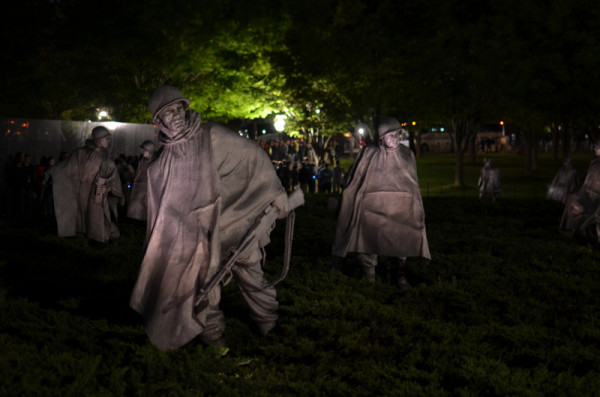
The second most moving monument for us was the Korean War memorial. It was near dark when we arrived, and the statues of soldiers moving through the low growing plants seemed ghostly. We were able to see how the soldiers were dressed and moving and imagine their feelings. This memorial sparked discussion about current events in North and South Korea.
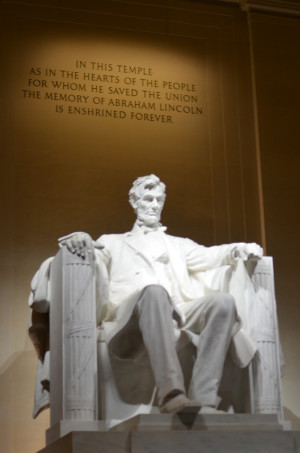
We ended as planned at the Lincoln Memorial. We’d read so much about this amazing man, and his monument is as awe-inspiring as his true story.
#3 Arlington National Cemetery

Our #3 and #2 spot aren’t in DC, but are worth the time to visit while you’re in the area. Arlington National Cemetery is a visual reminder of all that’s been sacrificed for the country we enjoy today. Rows of simple white stones line the rolling hills in this beautiful, poignant place.
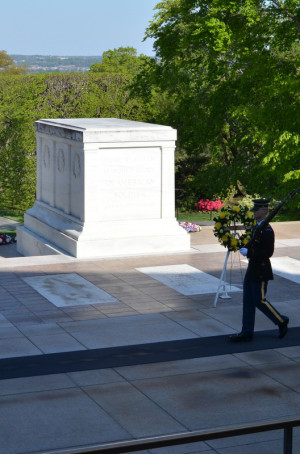
While there be sure to view the changing of the guard at the Tomb of the Unknown Soldier. The reverence paid to those who have given their all, and the sense of duty you’ll see in the men serving at the tomb will stay with you and your children.
#2 Mount Vernon
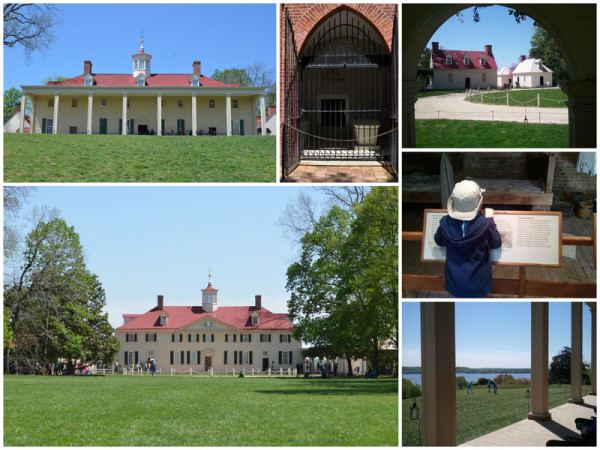
So much work has been done to restore and preserve George Washington’s Mount Vernon residence to be just as it was when he called it home. It was fascinating to see how he lived and walk on the grounds he loved.
The slave quarters and contrast between the lifestyles gave us so much to think about. The tour of the house has to move quickly to move so many people through, but roaming the estate you can take your time. Throughout the grounds there are informative signs and tour guides to answer questions.
#1 The Capitol Building

Our Capitol tour topped the list for all of us. There are public tours of the Capitol building, but I highly suggest contacting your Senator’s office well in advance. Maine Senator Susan Collins popped out of hearings to take photos with us and had a staff member give our small group (my family and two other adults) a lengthy tour.
The staff member was wonderful and allowed us to linger, take pictures and ask questions. We were able to observe in both the House and Senate galleries, watching the process of our government’s legislative branch. We also learned a lot about the history of the building and interesting background stories.
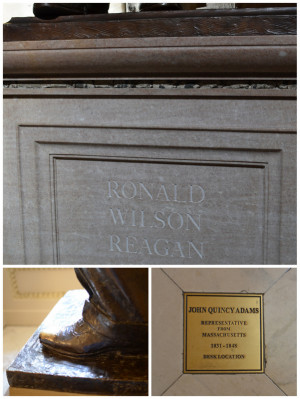
For instance, the statue of Ronald Reagan has pieces of the Berlin wall built into it. We could see where people rub the foot of the Will Roger’s statue for good luck. Our favorite story is probably the infamous “whisper spot” where John Quincy Adams could pretend to sleep and overhear conversations in the room. The acoustics are such that from his spot someone talking quietly from the other side of the room sounds like they are right next to you! (Make sure your tour guide demonstrates this–it is unreal.)
I hope this list helps any of you that are considering a trip to Washington, DC. It has to be the most fascinating vacation we’ve every taken, and we’re already brainstorming what we’d like to do someday when we return to our nation’s capital. For those of you that have visited, what is on your must-do list for Washington, DC?
Thank you to the wonderful hostesses with fun link-ups on Fridays. Be sure to join the fun and see what other homeschoolers have been up to!
Review: Heritage History

It is important to note the difference between history books and textbooks. A history book tells true stories from the past, while a textbook focuses on facts, names and dates without room for the the story. The distinction is so important to me! I disliked history classes in school, probably because I’m just horrid at remembering names and dates. I love a good story, though, and have been falling in love with history as I teach it to my kids using living books. A company called Heritage History has this philosophy:
What we consider essential is not perfect retention of a particular set of historical facts and concepts but an abiding interest in history itself.”
Sign me up for that! The more I homeschool the less I feel I learned in school, and the more I realize I can’t teach them everything that is valuable to know in all subjects. I really have to focus on creating lifelong learners so that they will continue to learn and be curious their whole lives.
Heritage History collects historical books in the public domain and re-formats them for use with digital e-readers. Hundreds of these books for young people are available for free to read on their website, but they also sell CDs with collections of books formatted specially for printing or reading on several different devices. Titles are limited to only those with expired copyrights and therefore the time period covered does not extend beyond the early 1900’s.
There are two types of CDs offered: one is a library CD that is a grouping of books on a specific time period or civilization, the other is a curriculum CD that can function as a stand-alone history curriculum because it includes the books plus maps, timelines, recommendations and accountability forms. Heritage History also promotes using their books as a supplement to other history programs.
I was given the opportunity to review a Heritage History CD and chose Early America because that is the time period we are already studying. The CD contains the book files as MOBI (for the Kindle), EPUB (for devices like the iPad) and also pdf (so you can print them). I am trying to avoid using reams of paper and loads of ink, but needed both the other files for my daughter’s Kindle and our iPad.
Loading the Books onto Multiple Devices
The CD arrived on a day my husband (better known around here as Mr. Tech Support) was working one of his 24-hour shifts. I placed it on my desk figuring to wait for his assistance; my usual routine with technology is to wait for Tech Support. You can read about my technology phobia here. Later in the day I was struck by the desire to figure this one out for myself. Perhaps I’d had too much coffee.
I sat down with my multiple electronic devices (that could cause hives all on its own!) and popped in the CD. Very simple instructions are available right on the CD case and on Heritage History’s website. Ten minutes later I had books loaded on the iPad. Can I just pause for a moment to say that the iBooks interface with the wooden bookshelf is so cute? I love the attractive visual, and though it was a new program for me I quickly figured out how to open books, check the table of contents, and bookmark pages.
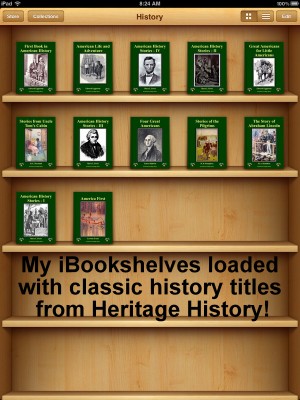
I texted Mr. Tech Support that I was now the technology guru of the house. I was totally impressed with myself, but really it’s a testament to the super-easy-to-follow instructions.
How We’re Using Heritage History
Our main history curriculum is the Early 19th Century Time Traveler’s History Unit from Homeschool in the Woods. I chose it for the general schedule of topics, top-notch printables and hands-on activities, but planned to supplement heavily with living books. We’ve been working through the unit, but finding the living books is not always easy. Our town’s library is small so I make frequent use of inter-library loan. One problem is timing my requests so I have it in our home by the time I need it, but not too early or I’ll have to return it before I’m done. I am also limited in the overall number of books I can request. I’m trying to keep our budget low so buying a lot is not an option. Heritage History is filling a real need in our homeschool and has simplified my life.
I began American History Stories by Mara Pratt as our read aloud for history.
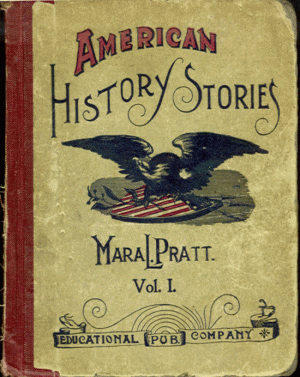
It is a four-volume set covering American history from early explorers to the end of the Civil War. I am delighted with this selection! It’s so enjoyable I decided to back up and pause our other program as we read from the beginning to refresh our memories from when we started studying American History last year. Mara Pratt’s writing style is very engaging as a read aloud: she draws us in and makes us feel as if we’re watching the story unfold before our eyes. Here’s an example as she talks about the Pilgrims on the Mayflower arriving in Plymouth Harbor in December:
Now, it seems rather cruel to leave these wanderers out in the cold storm; but we must for a few moments, while we hurry over to England to learn what had happened there to force these men and women across the ocean at this stormy time of the year.”
My kids are enthralled! They are listening like they do to exciting books like Treasure Island. They stop me to ask questions or share their feelings. You should have seen their faces when I read about the missing colony at Roanoke! We had studied that colony but it didn’t hit their emotions the way it was presented last year.
With my new-found technology guru status I also loaded up my daughter’s Kindle. I printed the book summaries from the CD and allowed her to pick any books in green (everything is color-coded so you know what reading levels the books are).
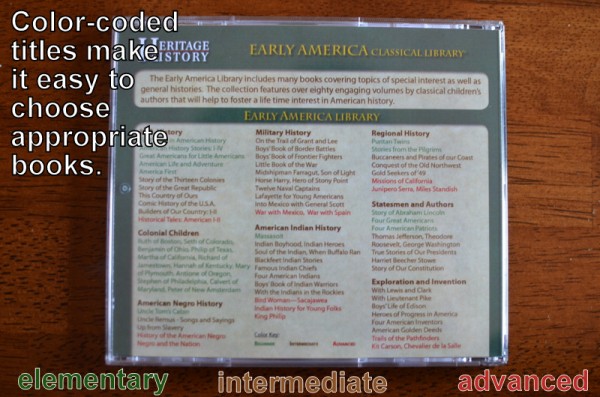
Ten minutes later she had a dozen new books on her Kindle which made her one happy girl.
My ten-year-old daughter’s opinion: She was very excited that there were illustrations (most of the free books we were loading onto her Kindle did not contain the original illustrations). She has been reading through America First, a collection of “100 interesting and romantic incidents from America’s history.” My daughter’s quote: “the stories are told very nicely in a straightforward way and are easy to understand.” She is enjoying America First for quick reading, as each chapter can stand alone as an interesting story. In fact, it prompted her to begin writing a historical fiction story about a girl on the Mayflower. I was thrilled that already right on her Kindle are several history books she can use for research on this time period.
The Early American CD is a library CD, not a curriculum CD. I enjoy hands-on learning and interesting ways to narrate what they’ve learned (minibooks, notebook pages, unique writing assignments) so using another main curriculum for activities, printables, and other suggestions along with reading quality literature like the books from Heritage History works well for me. I can see this being a part of our history studies for years to come. This one CD has over 80 books for reading levels up to high school–at a retail price of $19.99 that is only a quarter per book, not to mention that each book is available in multiple formats! There are books I can just imagine my son loving when he is older that cover military history and inventors. It’s an economical choice–both financially and in terms of space on our already-full bookshelves.
Check it Out for Yourself:
The Heritage History website is full of information–lists of all their books, their library and curriculum CDs, more on their philosophy and even suggested courses of study.
If you decide it would work in your homeschool, Heritage History has a special offer for my readers. Until December 31st you can get the Early America library CD (regular price of $19.99) for FREE with the purchase of any of their curriculum CDs (regular price of $24.99). Simply add a curriculum CD and the Early America CD to your shopping cart and enter the discount code SCHOOLRM at checkout and the cost of the Early America CD will be deducted.
I received the CD for free for the purpose of reviewing it. These opinions are my honest thoughts after using the product in our homeschool. As an affiliate I receive a commission from Heritage History when you use the discount code.
Review: All Through The Ages, A Guide to Learning History Through Literature
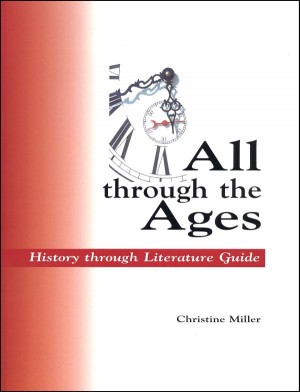
I received a copy of the book All Through The Ages by Christine Miller from Nothing New Press for review. All Through The Ages is a guide to over 7000 books–quality “living books” that can be used for teaching history through literature. I’m wondering if this may possibly be the most glowing review I’ll ever write, because this resource just became my new best friend. I’d sleep with it under my pillow if it wasn’t so thick.
I’ll preface this review by saying that I’m becoming a bit of a history nut now that I’m a homeschooler. I barely remember anything from my history classes in school, except complaining that I couldn’t remember dates and names very well. Fast forward 15 years and for our first summer homeschooling I chose a unit study on the Revolutionary War from Homeschool Share. I found myself fascinated as we read books together. History was a great story! From then on I was hooked on learning history through good literature (with me learning right along with my children), then following up with narration (through notebooking or minibooks) and hands-on activities to cement those fascinating stories.
What is it?
All Through The Ages was written to fill a need that the author recognized: a one-stop resource for teaching history through literature. It contains books from over 20 respected sources: companies such as Beautiful Feet and Sonlight, books such as Honey for a Child’s Heart, award lists such as Newbery & Pulitzer (visit the website for a list of sources). Before finding this book I would check several book lists when planning our history studies, trying to sort out which books would be appropriate for my children’s ages for both reading aloud and as independent reading. I felt disorganized and had a hard time keeping track of which lists I had checked, and realized I would have to repeat the process when we studied these time periods again.
Right now we are studying the early 1800’s using a Time Traveler’s unit from Homeschool in the Woods. I love the written work and activities but wanted more than the lesson text for reading aloud. I was immediately able to try out All Through The Ages. I read the introduction, which is a great overview of the book and how it’s arranged, the author’s thoughts on studying history chronologically and using “living” books, and several examples of sequences for study. After that I went right to the time period we are studying.
What works for us:
In one place were recommended books on all the topics we’ll be studying! It’s not just the titles and author, but also a short note for each: the specific event or dates, for biographies a quick reminder of what that person did, and extra information like that the book is beautifully illustrated or contains authentic journal excerpts. The books are also divided into age groups (Grades 1-3, 4-6, 7-9, 10-12) and types (Resources for all Ages, Overview of the Era, Specific Events, Biography, Historical Fiction, Literature, Culture).
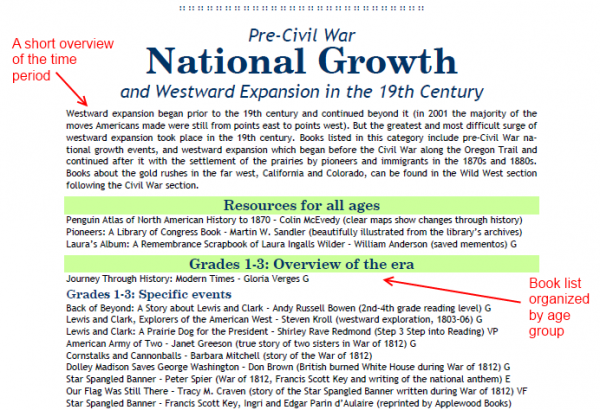
The book lists alone would make this a recommended resource, but I’m not done listing the wonders of this book yet. There is also a short write-up at the beginning of each section and a timeline of the era at the end–helpful for reminders and ideas of events to cover. In addition to sections on historical eras from Creation to modern times, there are sections covering the history of geographical regions, and also the history of science and math, visual arts and music. I can only imagine how often I’ll be using this book!
What doesn’t work for us:
For our homeschool this is an incredibly helpful resource without a single drawback. I do want to note that this is a Christian, Creation-based history resource. The author summarizes it this way:
I have chosen to use biblical chronology and the historical records of the ancient world, rather than, as most modern history references do, dates harmonized with current evolutionary theory.
Books from Answers in Genesis are included, and the ancient history timelines were aligned with James Ussher’s The Annals of the World (originally published in 1658).
The bottom line:
If you use a living books approach to studying history this is an invaluable reference book. It is well-organized, easy to use, and saves time. We love hands-on activities, lapbooking and notebooking so we use other resources as well, but with this book and a library card you could have a complete history program for a student’s entire homeschool career.
Check it out for yourself:
Nothing New Press has sample pages and the table of contents for you to view on their website, and you can purchase the book in print or as an ebook directly from them. The print book is also available from Rainbow Resources.
